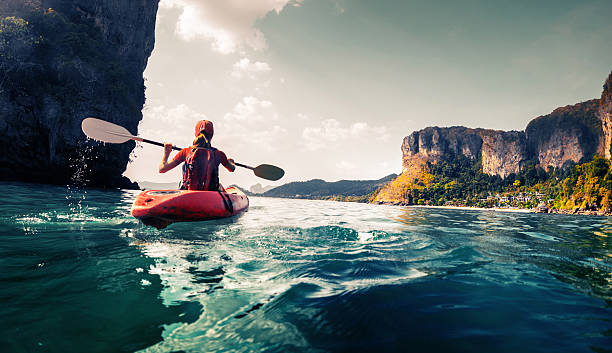Water Sports Equipment For Fun And Learning
Water sports use many different types of equipment, from surfboards and paddleboards to kayaks, snorkels, and fins. Each item has a clear purpose that helps people enjoy time in the water. This article explains the most common equipment, how it is used, and what makes each piece special. With simple language and clear examples, you will learn how boards, paddles, and other gear are part of water activities around the world. It is an easy and practical guide that shows how water sports equipment fits into both fun and learning experiences.

What Water Sports Equipment Do You Need to Get Started?
Basic water sports equipment varies significantly depending on your chosen activity, but several fundamental items appear across multiple water sports. Safety gear ranks as the most critical starting point, including properly fitted life jackets or personal flotation devices that meet Coast Guard standards. Quality equipment designed for beginners often features enhanced stability and forgiveness, making the learning process more enjoyable and less frustrating.
Essential accessories include waterproof storage solutions, appropriate footwear for different water conditions, and sun protection gear like rash guards or wetsuits. Many water sports also require specific tools or paddles, each designed with particular blade shapes, lengths, and materials to optimize performance for different activities and user heights.
How Do Surfboards and Paddleboards Differ in Design and Use?
Surfboards and paddleboards serve distinct purposes despite sharing similar board-like structures. Surfboards typically feature pointed noses, curved rocker profiles, and fin configurations designed to ride waves and perform maneuvers in breaking surf. Foam boards work well for beginners, while fiberglass and epoxy constructions offer advanced performance characteristics for experienced surfers.
Paddleboards, commonly called SUPs (stand-up paddleboards), emphasize stability and glide efficiency for flatwater paddling. These boards usually measure wider and longer than surfboards, with displacement or planing hull designs optimized for different paddling styles. Inflatable paddleboards provide convenient storage and transportation options, while rigid boards typically offer superior performance and durability for frequent use.
What Essential Kayaking Gear Should Every Paddler Consider?
Kayaking gear encompasses both the vessel itself and numerous supporting accessories that enhance safety and comfort on the water. Kayak selection depends heavily on intended use, with recreational models offering stability for beginners, touring kayaks providing efficiency for longer distances, and whitewater designs built to handle rapids and rough conditions.
Paddles represent perhaps the most important accessory after the kayak itself, with lightweight materials like carbon fiber reducing fatigue during extended paddling sessions. Proper paddle sizing depends on your height, kayak width, and paddling style. Additional essential gear includes spray skirts for touring kayaks, dry bags for gear storage, bilge pumps for water removal, and appropriate clothing systems for different weather and water temperatures.
Which Snorkeling Equipment Items Are Most Important for Safety?
Snorkeling equipment focuses on three primary components that work together to provide safe underwater viewing experiences. A properly fitting mask creates a watertight seal around your face while providing clear vision underwater. Masks should sit comfortably without over-tightening the strap, and the skirt should seal against your face when you inhale gently through your nose.
Snorkels allow continuous breathing while floating face-down on the surface, with dry-top designs preventing water entry when waves wash over the tube. Fins increase swimming efficiency and help maintain position in currents, with different blade lengths and stiffness levels suited to various swimming abilities and water conditions. Additional safety equipment includes flotation devices for less confident swimmers and protective clothing for sun exposure and potential marine life encounters.
How Can a Water Activity Guide Help You Choose the Right Equipment?
A comprehensive water activity guide serves as an invaluable resource for matching equipment to your specific needs, local conditions, and skill development goals. These guides typically include detailed explanations of equipment specifications, sizing charts, and recommendations based on different experience levels and intended uses.
Quality guides also address regional considerations like water temperature ranges, typical weather patterns, and local regulations that might affect equipment choices. They often include maintenance tips, storage recommendations, and safety protocols specific to different water sports activities, helping you maximize both equipment lifespan and personal safety on the water.
| Equipment Category | Popular Brands | Typical Price Range |
|---|---|---|
| Beginner Surfboards | Wavestorm, Catch Surf, BIC Sport | $150 - $400 |
| Recreational Kayaks | Perception, Old Town, Sun Dolphin | $400 - $800 |
| Inflatable Paddleboards | BOTE, Red Paddle Co, iROCKER | $300 - $700 |
| Snorkeling Sets | Cressi, Mares, Scubapro | $50 - $150 |
| Kayak Paddles | Werner, Aqua-Bound, Carlisle | $80 - $250 |
Prices, rates, or cost estimates mentioned in this article are based on the latest available information but may change over time. Independent research is advised before making financial decisions.
Investing in quality water sports equipment appropriate for your skill level and intended activities creates a foundation for years of enjoyable experiences on the water. Start with essential safety gear and basic equipment, then gradually upgrade or specialize your gear collection as your skills and interests develop. Remember that proper equipment maintenance and storage significantly extends gear lifespan while ensuring reliable performance when you need it most.




